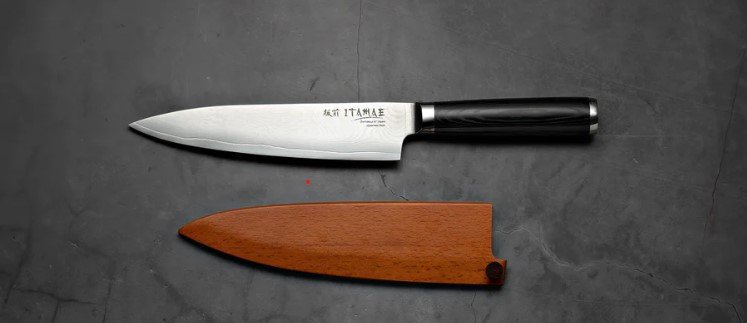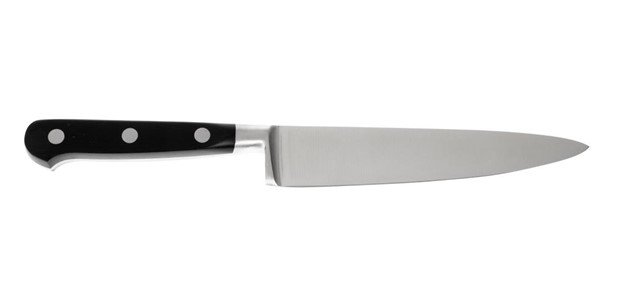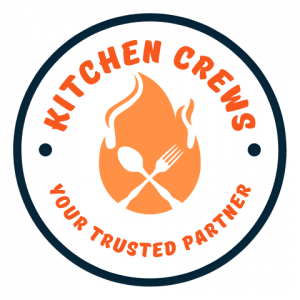All-purpose chef’s knives, cook’s knives, and other kitchen knives used daily for meal prepping fill overlapping roles of slicing, dicing, and chopping ingredients. However, the precise differences between models – including variations in blade shape suited for chopping or carving, blade lengths from 6 to 10 inches, and heft impacting chopping power – make particular knives better fits depending on cooking needs and styles.
Here is a table summarizing the key differences between chef’s knives, cook’s knives, and kitchen knives:
| Knife Type | Chef’s Knife | Cook’s Knife | Kitchen Knives |
|---|---|---|---|
| Blade Length | 8-10 inches | 6-8 inches | Varies greatly |
| Blade Width | Widest | Narrower | Task-specific |
| Blade Thickness | Thickest | Thinner | Varies |
| Blade Tip Shape | Moderate curve | Mild curve | Task-specific shape |
| Steel Quality | Often high-carbon | Softer steel used | Varies from stainless to disposable |
| Primary Uses | Chopping Cutting meat Mincing | Slicing Carving Trimming | Specific tasks based on specialty blade design |
| Chopping Power | Greatest | Moderate | Task-dependent |
| Slice Precision | Moderate | Excellent | Task-dependent |
| Versatility | Highly versatile | Versatile | Lacks versatility outside of specialty |
Chef knife vs cook knife vs kitchen knife
Chef’s Knife
The chef’s knife, designed for chopping, slicing, and mincing, is the workhorse knife that handles the majority of cutting needs arising daily in home kitchens.
Physical Characteristics
Chef knives have blades typically constructed using durable high-carbon stainless steel, retaining sharpness and resisting corrosion from moisture or acids. The standard chef knife ranges between 8 to 10 inches long, with the most common length being 8 inches for maximal adaptability to diverse cutting tasks like produce chopping or meat slicing. Its signature broad, curved shape supports repetitive rocking motions.

Usage & Versatility
True to its “jack-of-all-trades” reputation, the chef knife’s wide blade excels at chopping vegetables, crushing ingredients like garlic, transferring chopped food into pots, slicing proteins, and mincing soft herbs. With proper blade care through regular sharpening, the versatile chef knife can last for decades, tackling the daily demands of an avid home cook.
Key Advantages
- Safety via ample cutting edge requiring less mechanical force
- Durability to withstand years of daily use
- Versatility in chopping, slicing, or crushing soft foods
- Precise cuts when sharpened regularly
Cook’s Knife
Compared to the heavier chef’s knife, the lightweight and nimble cook’s knife allows for greater precision and control suited to more delicate slicing or carving tasks.
Physical Characteristics
The thinner cook’s knife blade varies from 6 to 8 inches long. While also typically made using stainless steel, cook’s knives tend to use softer (yet still durable) steel that can be honed to an exceptionally sharp edge for clean cuts but requires more frequent sharpening. The blade maintains moderate curvature towards the tip but lacks the heft of a chef’s knife.

Usage & Versatility
The slender blade and lighter weight of a cook’s knife allow for greater control and ease when slicing fruits, vegetables, or proteins. The tip facilitates tasks like safely trimming fat from cuts of meat. Cooks may employ the blade’s straight edge for transfer or utility purposes as well in place of bulkier knives. Its medium size adapts well to most common kitchen prep.
Key Advantages
Advantages of the cook’s knife include:
- Thin, agile blade providing precise slicing control
- Sharp edge ideal for raw meats or delicate produce
- Safe paring capability
- Lightweight versatility as a supplemental knife
Kitchen Knives
The broad category of “kitchen knives” encompasses the wide variety of specialized blades designed for particular cutting tasks, like bread knives for slicing loaves or paring knives for peeling fruits.

Physical Characteristics
Kitchen knives tailor blade length, width, curvature, tip shape, serration levels, and other structural qualities to best match the ingredients they are built to cut. The breadth of kitchen knives means compositions range from stainless steel alloys needing occasional sharpening to disposable knives with plastic blades. They also come in a broad spectrum of sizes, from 3-inch paring knives to 10+ inch slicers.
Usage & Versatility
Kitchen knives shine when used for their stated specialization – a narrow boning knife to closely trim the meat from bones or a cimeter-curved carving knife to thinly slice roasts. While excelling at certain tasks, the vast majority of kitchen knives lack versatility outside their intended purpose. Disposable knives offer convenience but dull easily with extensive use.
Key Advantages
Advantages of specialized kitchen knives include:
- Precisely designed blades to best tackle individual tasks
- Varied sizes and shapes suit cooks’ needs
- Disposable options trading longevity for convenience
- Select blades providing easy maintenance
FAQ on Chef knife vs cook knife vs kitchen knife
What’s the difference between a chef’s knife and a cook’s knife?
A chef’s knife has a broader, heavier blade ranging from 8-10 inches long, ideal for chopping. A cook’s knife features a thinner 6 to 8-inch blade better suited to slicing, carving, and paring tasks requiring more finesse.
What is best for chopping vegetables – a chef knife or a cook knife?
A chef’s knife is better for chopping vegetables thanks to its heavier weight, broader curved blade, and more robust construction. The cook’s knife instead excels at vegetable slicing due to its thinner, narrower blade, offering users more controlled cuts.
Which is sharper – a cook’s knife or a chef’s knife?
Cook’s knives are often made from softer steel alloys so they can be honed to an exceptionally sharp edge but dull more quickly between sharpenings. Many chef’s knives use high-carbon stainless steel, holding their edge well over extended periods of use.
What kitchen knife should I choose as a beginner?
For newer cooks outfitting their first kitchen, an affordable 8-inch chef’s knife with a durable blade provides the best versatility across everyday chopping and slicing tasks. It can handle most needs until other specialized knives are added.
conclusion
While chef’s knives, cook’s knives, and other kitchen cutlery all serve the general purpose of food preparation, understanding their distinct strengths facilitates selecting the right knife. When regularly chopping large volumes of produce or meat, a sturdy chef’s knife with an 8 to 10-inch blade becomes indispensable.
Cooks wanting more finessed slices or paring control may grab a slimmer yet similarly versatile cook’s knife instead. For specialty tasks like bread or boning meat, unique kitchen knives designed expressly for such uses prove essential. Prioritizing needs around versatility, durability, precision, and safety determines the best blade for the job.
Related Post
Recent Posts
Bread knives have prongs to prevent the bread's soft interior from compressing downwards when sliced. As the knife presses down, the prongs allow pockets of air to escape sideways instead of getting...
As a direct-to-consumer knife brand founded in 2016, Misen set out to provide quality chef's knives and kitchen cutlery that perform well for home cooks at lower prices than premium brands like...
